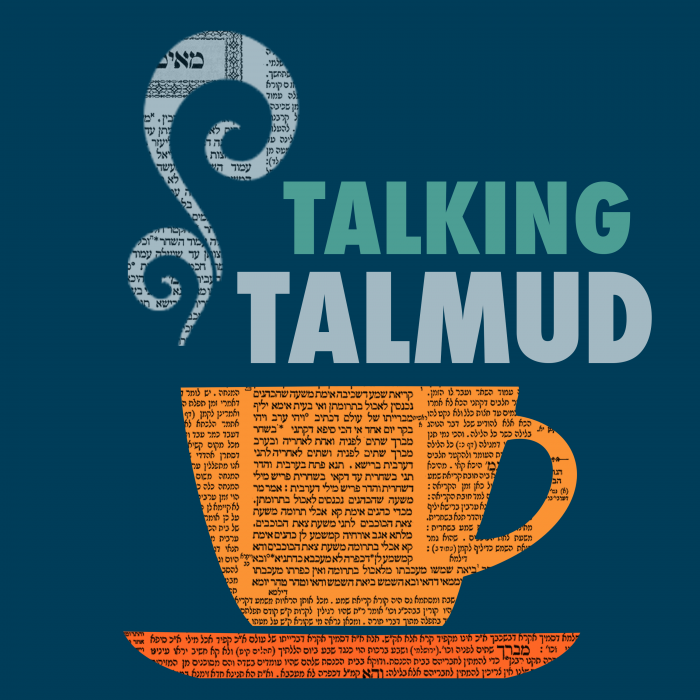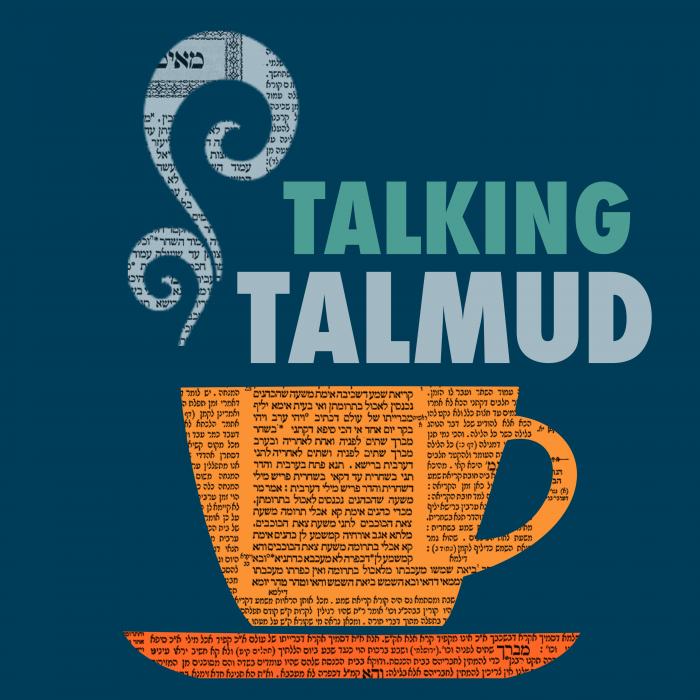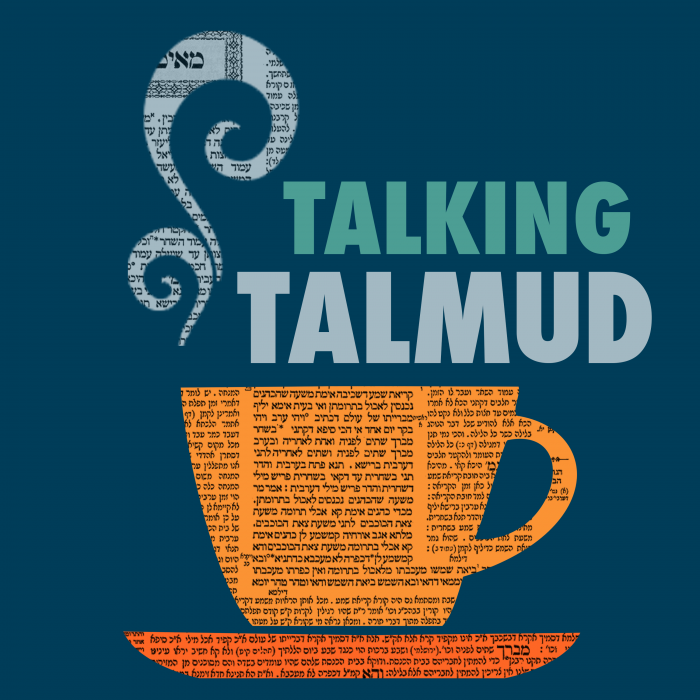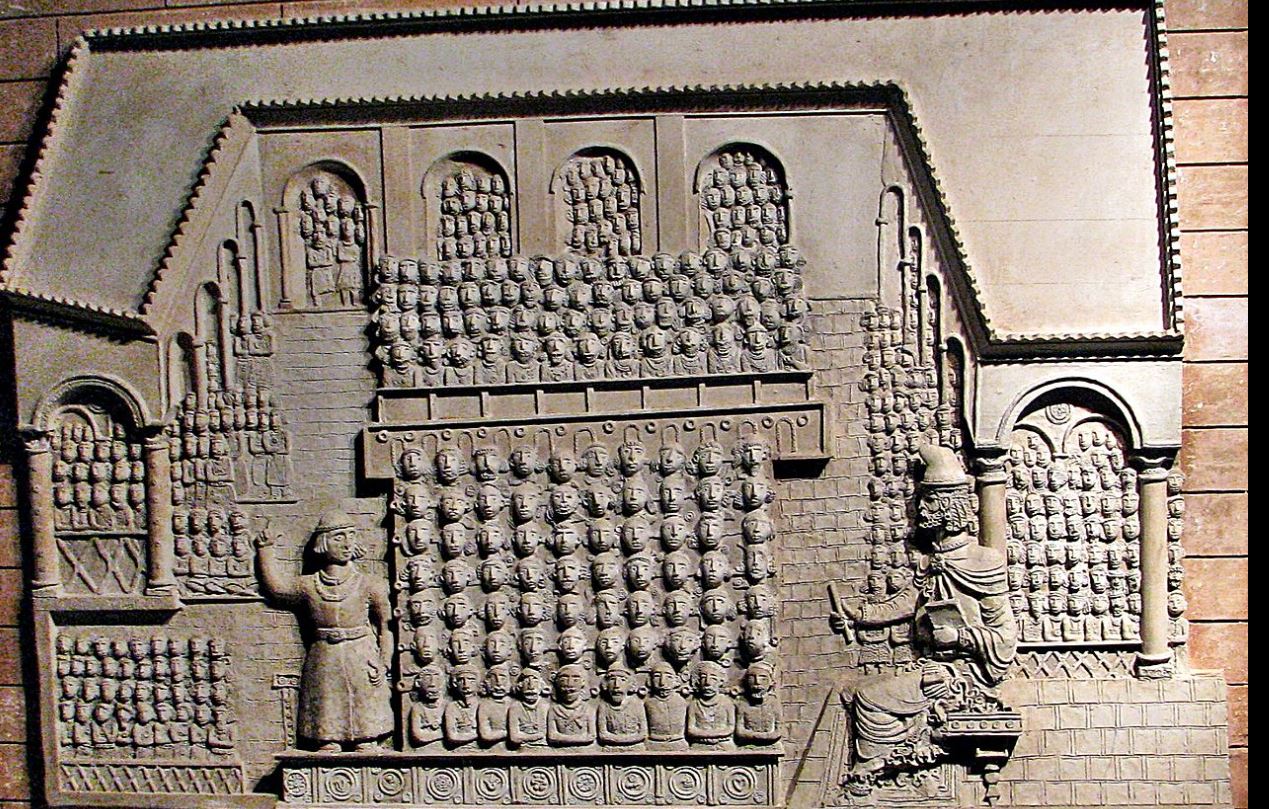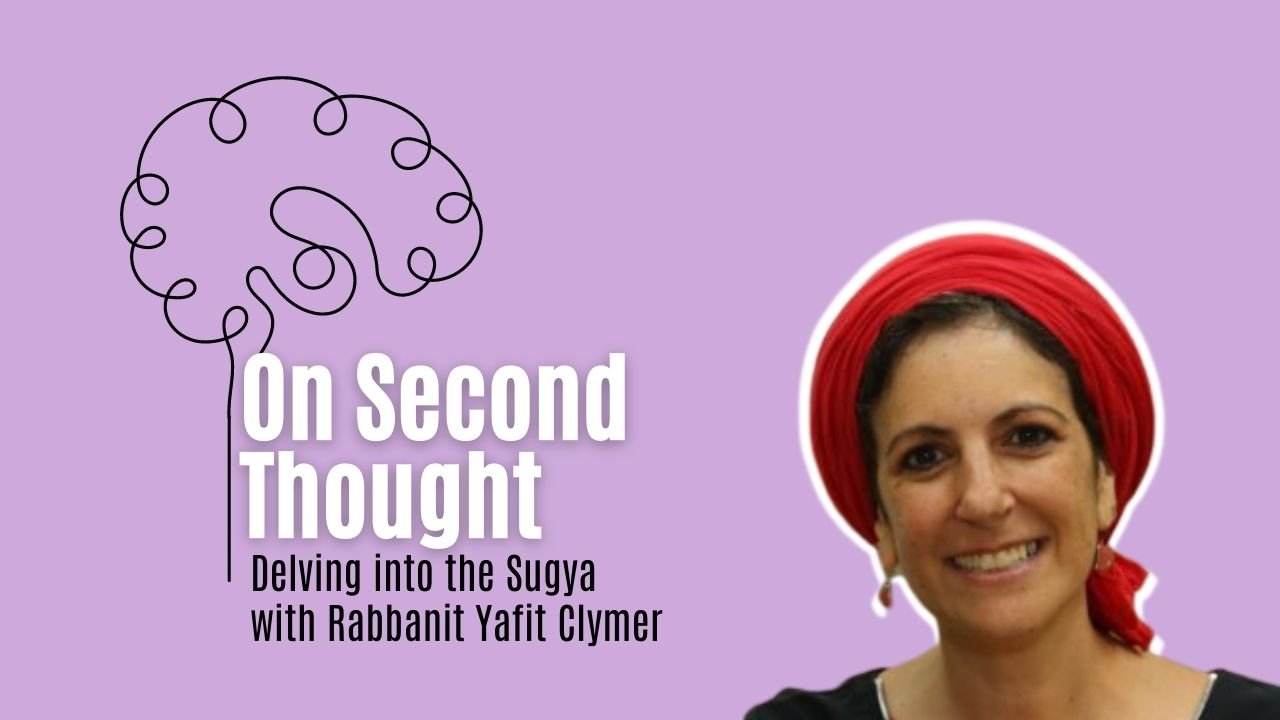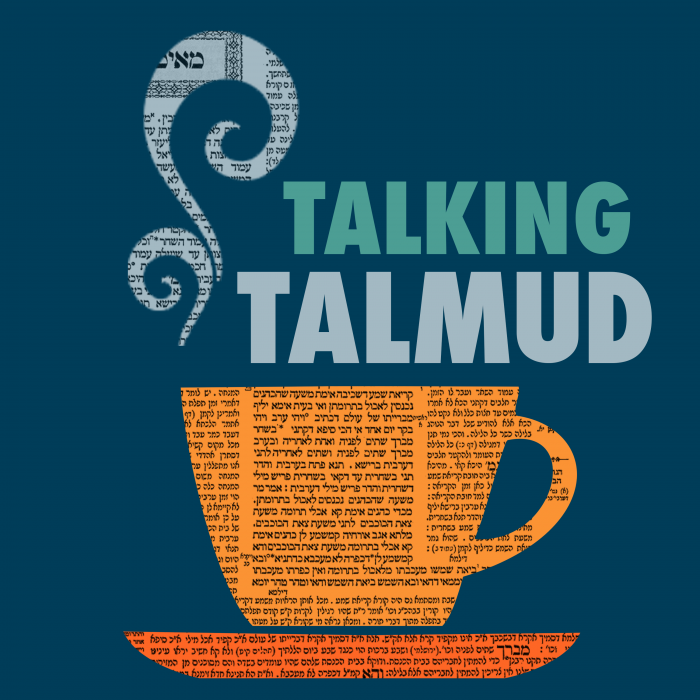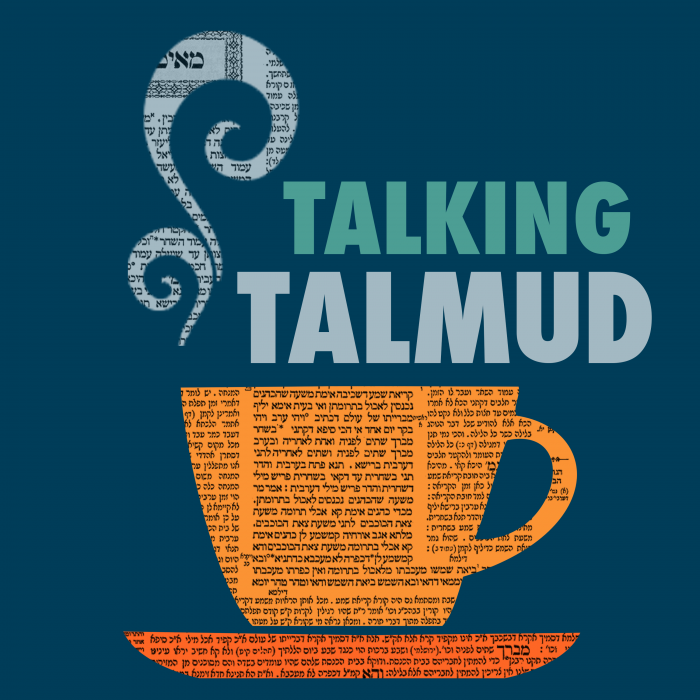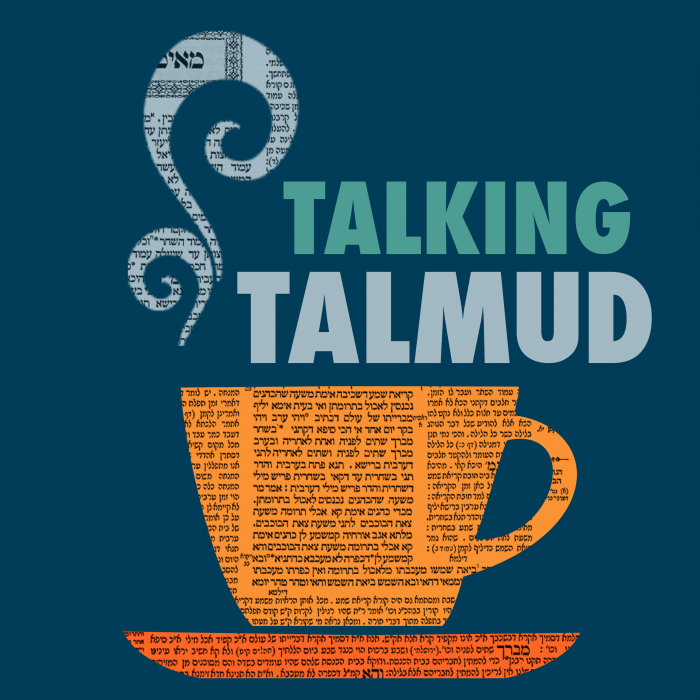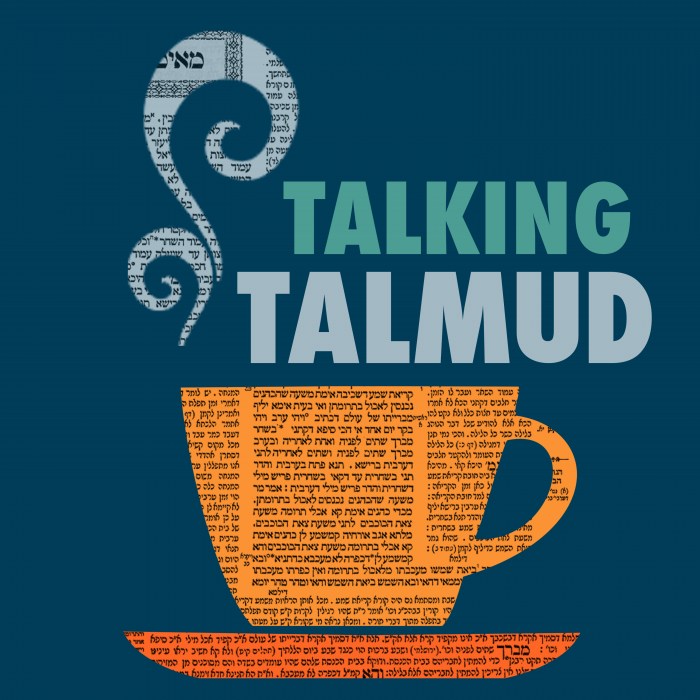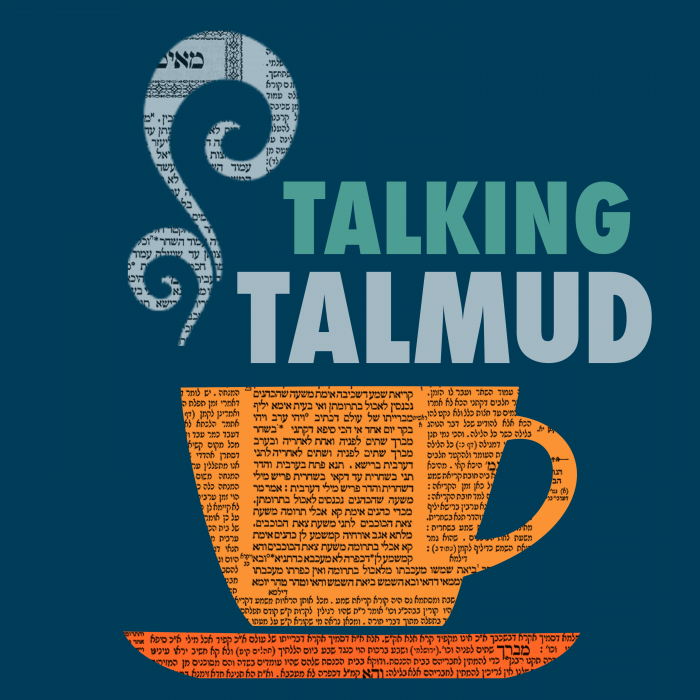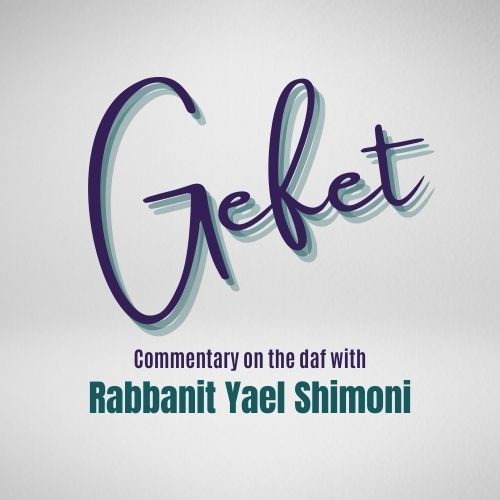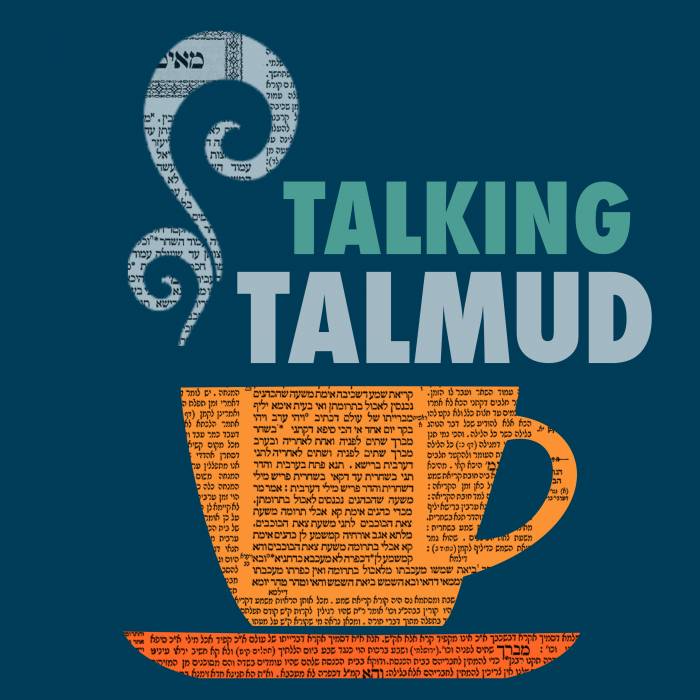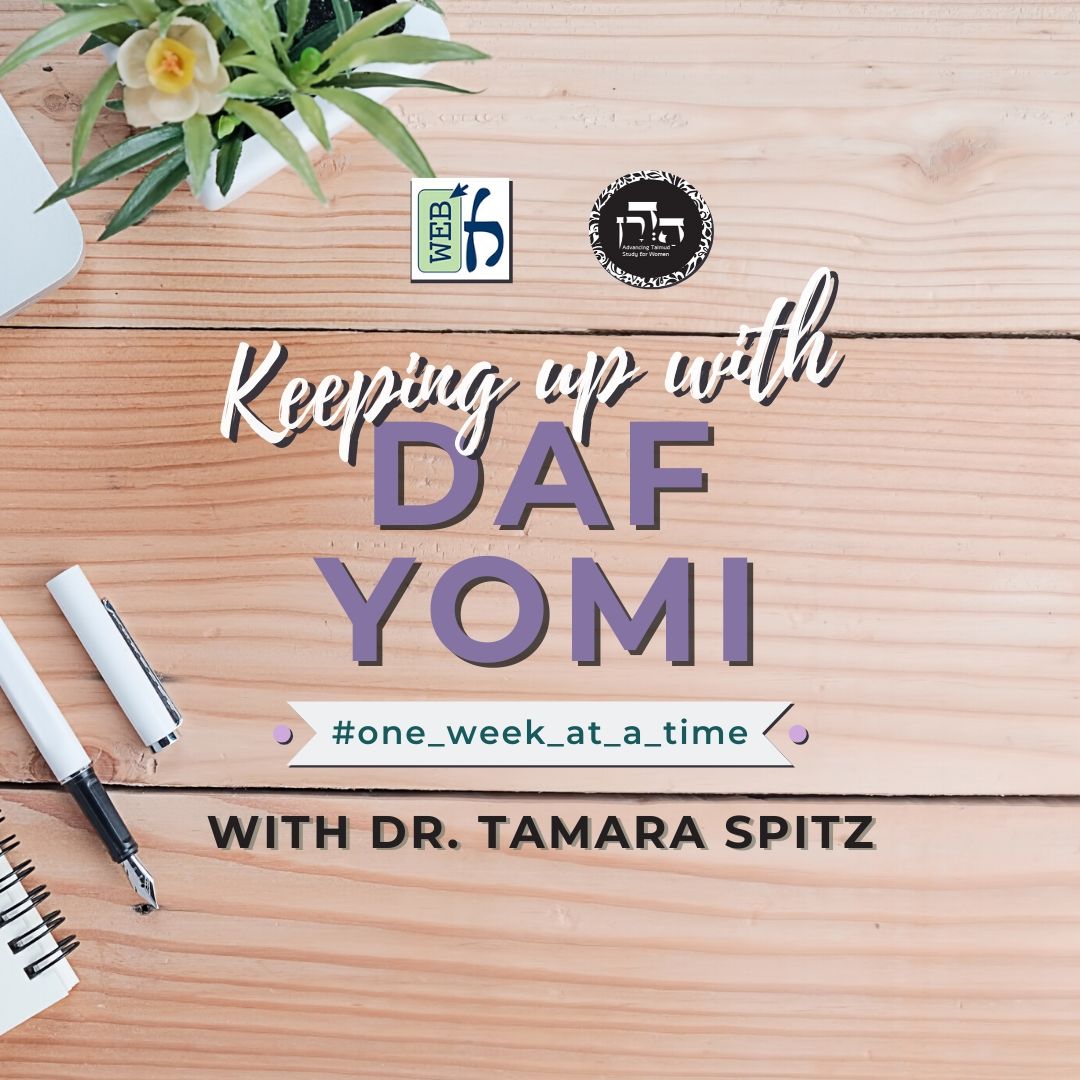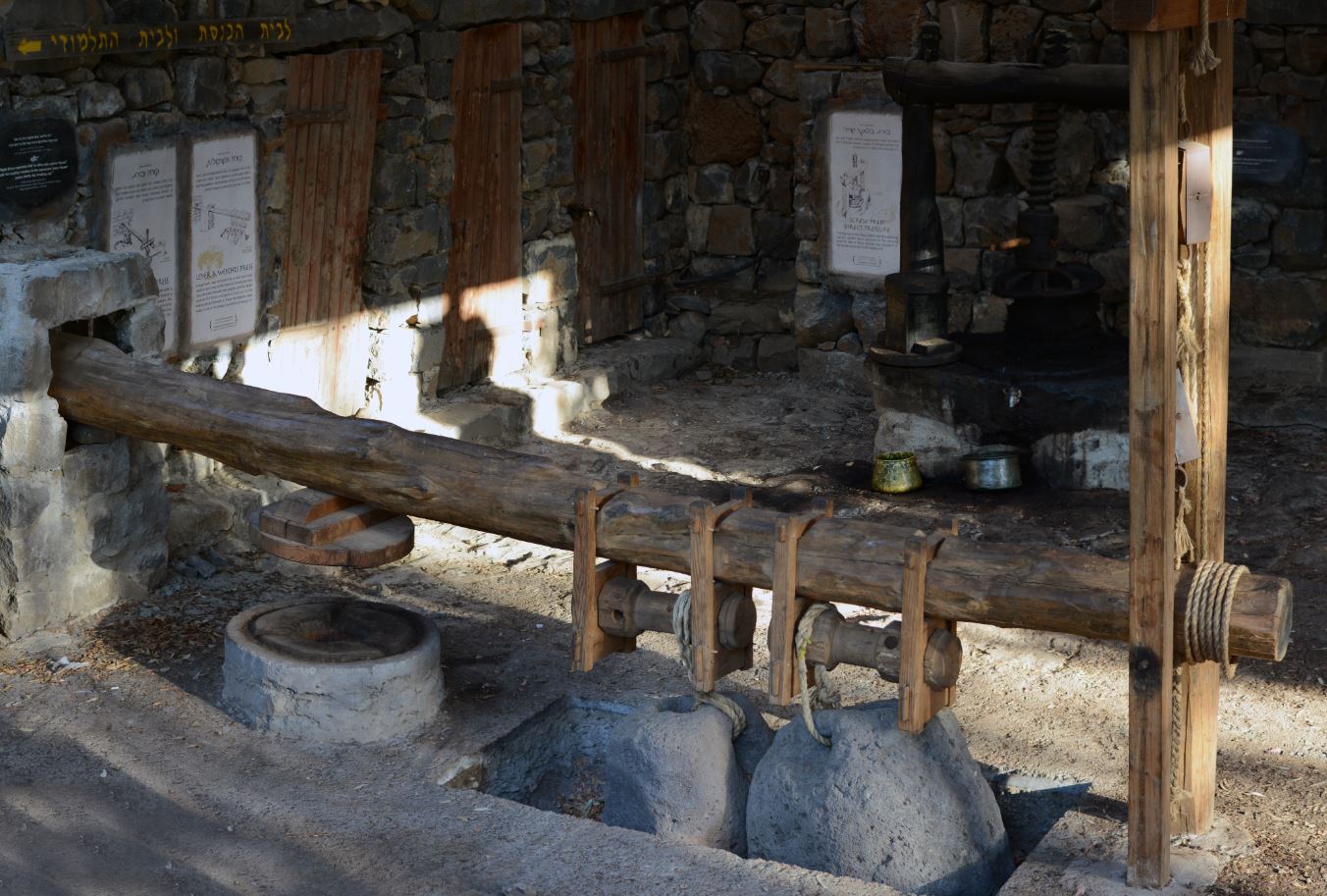Why was the table considered made from wood for rules of purity/impurity and not from metals as it was covered in gold? If there were cubits that were 6 handsbreadths and cubits that were 5, which items in the mikdash were 6 handbreadth cubits and which were 5?
This week’s learning is sponsored by Robert and Paula Cohen in loving memory of Joseph Cohen, Yosef ben Moshe HaCohen, z”l. “He was hard working, loved to sing, esp. as a chazan, and was very dedicated to his family and community.”
Want to dedicate learning? Get started here:


Today’s daily daf tools:
This week’s learning is sponsored by Robert and Paula Cohen in loving memory of Joseph Cohen, Yosef ben Moshe HaCohen, z”l. “He was hard working, loved to sing, esp. as a chazan, and was very dedicated to his family and community.”
Today’s daily daf tools:
Delve Deeper
Broaden your understanding of the topics on this daf with classes and podcasts from top women Talmud scholars.
New to Talmud?
Check out our resources designed to help you navigate a page of Talmud – and study at the pace, level and style that fits you.
The Hadran Women’s Tapestry
Meet the diverse women learning Gemara at Hadran and hear their stories.
Menachot 97
לְבִזְבְּזָיו, אוֹ בְּשֶׁלֹּא חִיפָּה אֶת לְבִזְבְּזָיו? וְאָמַר לֵיהּ: לָא שְׁנָא צִיפּוּי עוֹמֵד, וְלָא שְׁנָא צִיפּוּי שֶׁאֵינוֹ עוֹמֵד, לָא שְׁנָא חִיפָּה אֶת לְבִזְבְּזָיו, וְלָא שְׁנָא לָא חִיפָּה לְבִזְבְּזָיו.
the Table’s rim [levazbazin] as well as the Table itself, or even to a case where one did not cover its rim? And Rabbi Yoḥanan said to Reish Lakish: The case of a permanent covering is not different, and the case of a covering that is not permanent is not different. Likewise, the case where one covered the rim is not different, and the case where one did not cover the rim is not different. In any case a vessel’s status is determined according to the material of the external covering, and the shewbread Table should be susceptible to impurity because its external covering was of gold. It is therefore not necessary to derive that the Table is susceptible to impurity due to the fact that it is not designated to rest in a fixed place.
וְכִי תֵּימָא, עֲצֵי שִׁיטִּים חֲשִׁיבִי וְלָא בָּטְלִי – הָנִיחָא לְרֵישׁ לָקִישׁ, דְּאָמַר: לֹא שָׁנוּ אֶלָּא בִּכְלֵי אֶכְּסְלָגוֹס הַבָּאִים מִמְּדִינַת הַיָּם, אֲבָל כְּלִי מִסְמָס חֲשִׁיבִי וְלָא בָּטְלִי – שַׁפִּיר. אֶלָּא לְרַבִּי יוֹחָנָן, דְּאָמַר: כְּלֵי מִסְמָס נָמֵי בָּטְלִי, מַאי אִיכָּא לְמֵימַר?
The Gemara suggests another explanation: And if you would say that the acacia wood from which the shewbread Table is fashioned is different, as it is an important, valuable type of wood and therefore the Table’s status as a wooden vessel is not negated by the fact that it was covered with gold, there would still be a difficulty. This explanation works out well according to the opinion of Reish Lakish, who said: The mishna taught that the status of a wooden vessel is determined according to the material of its covering only with regard to vessels made of medium-grade akhsalgos wood, which come from overseas, but vessels made of expensive masmas wood are important, and therefore their status as wooden vessels is not negated by the covering. According to this opinion the ruling works out well, as the acacia wood of the shewbread Table is also valuable. But according to the opinion of Rabbi Yoḥanan, who said the importance of masmas vessels is also negated by the covering, what is there to say?
שָׁאנֵי שׁוּלְחָן, דְּרַחֲמָנָא קַרְיֵיהּ ״עֵץ״, שֶׁנֶּאֱמַר: ״הַמִּזְבֵּחַ עֵץ שָׁלוֹשׁ אַמּוֹת גָּבֹהַּ אׇרְכּוֹ שְׁתַּיִם אַמּוֹת וּמִקְצֹעוֹתָיו לוֹ וְאׇרְכּוֹ וְקִירֹתָיו עֵץ וַיְדַבֵּר אֵלַי זֶה הַשֻּׁלְחָן אֲשֶׁר לִפְנֵי ה׳״.
The Gemara answers: The Table is different, because the Merciful One called it wood, as it is stated: “The altar was of wood, three cubits high, and its length two cubits, and so its corners; and its length, and its walls were also of wood, and he said to me: This is the Table that is before the Lord” (Ezekiel 41:22). This verse is referring to the shewbread Table, and it describes it as being made of wood, even though the wood was not visible. This indicates that its status is like that of all wooden vessels, which are not susceptible to impurity unless they are carried both when empty and when full.
פָּתַח בַּמִּזְבֵּחַ וְסִיֵּים בַּשּׁוּלְחָן? רַבִּי יוֹחָנָן וְרַבִּי אֶלְעָזָר דְּאָמְרִי תַּרְוַיְיהוּ: בִּזְמַן שֶׁבֵּית הַמִּקְדָּשׁ קַיָּים – מִזְבֵּחַ מְכַפֵּר עַל אָדָם, וְעַכְשָׁיו שֶׁאֵין בֵּית הַמִּקְדָּשׁ קַיָּים – שׁוּלְחָנוֹ שֶׁל אָדָם מְכַפֵּר עָלָיו.
The Gemara challenges: Why does the verse begin with the word “altar” and conclude with the word “Table,” even though both terms are referring to the same item? Rabbi Yoḥanan and Rabbi Elazar both say the following interpretation: When the Temple is standing, the altar effects atonement for the transgressions of a person, but now that the Temple is not standing, a person’s table effects atonement for his transgressions, if he provides for the poor and needy from the food on his table.
אַרְבָּעָה סְנִיפִין שֶׁל זָהָב הָיוּ שָׁם [וְכוּ׳]. מְנָא הָנֵי מִילֵּי? אָמַר רַב קַטִּינָא: אָמַר קְרָא ״וְעָשִׂיתָ קְּעָרֹתָיו וְכַפֹּתָיו וּקְשׂוֹתָיו וּמְנַקִּיֹּתָיו״.
§ The mishna describes the shewbread Table (96a): There were four panels of gold there, which split up at their upper ends, above the Table, and there were twenty-eight rods that rested upon the panels. The Gemara asks: From where are these matters derived? Rav Ketina said: The verse states with regard to the Table: “And you shall make its dishes and its pans, uksotav umnakkiyyotav, with which it shall be covered; of pure gold you shall make them” (Exodus 25:29).
״קְעָרֹתָיו״ – אֵלּוּ דְּפוּסִין, ״כַּפֹּתָיו״ – אֵלּוּ בָּזִיכִין, ״קְשׂוֹתָיו״ – אֵלּוּ סְנִיפִין, ״וּמְנַקִּיֹּתָיו״ – אֵלּוּ קָנִים, ״אֲשֶׁר יֻסַּךְ בָּהֵן״ – שֶׁמְּסַכְּכִין בָּהֶן אֶת הַלֶּחֶם.
Rav Ketina interprets the verse: “Its dishes,” these are the molds in which the loaves are kneaded, baked, and placed after baking (see 94a). “Its pans,” these are the bowls for the frankincense that is placed on the Table with the shewbread. “Kesotav,” these are the four panels of gold. “Umnakkiyyotav,” these are the rods, which rest on the notches in the panels and bear the loaves, one on top of the other. “With which it shall be covered,” this indicates that the bread is covered by the rods.
מוֹתֵיב רָבָא: לֹא סִידּוּר הַקָּנִים וְלֹא נְטִילָתָן דּוֹחוֹת אֶת הַשַּׁבָּת, וְאִי סָלְקָא דַּעְתָּךְ דְּאוֹרָיְיתָא, אַמַּאי אֵין דּוֹחוֹת אֶת הַשַּׁבָּת?
Rava raises an objection to this interpretation, which indicates that the rods are required by Torah law: The mishna states: Neither the arranging of the rods for the new shewbread, nor their removal from the arrangement of the old shewbread, overrides Shabbat. And if it enters your mind to say the rods are required by Torah law, why does their arrangement not override Shabbat?
הֲדַר אָמַר רָבָא: לָאו מִילְּתָא הִיא דַּאֲמַרִי, דִּתְנַן, כְּלָל אָמַר רַבִּי עֲקִיבָא: כׇּל מְלָאכָה שֶׁאֶפְשָׁר לָהּ לַעֲשׂוֹתָהּ מֵעֶרֶב שַׁבָּת – אֵינָהּ דּוֹחֶה אֶת הַשַּׁבָּת. וְהָנֵי נָמֵי אֶפְשָׁר דְּלָא דָּחֵי שַׁבָּת עֲלַיְיהוּ.
Rava then said: That which I said, that one can infer from the mishna that the rods are not required by Torah law, is not correct, as we learned in the mishna that Rabbi Akiva stated a principle: Any labor that can be performed on Shabbat eve does not override Shabbat. And these actions, arranging and removing the rods, can also be performed in a manner that does not require overriding Shabbat for them, as the rods can be removed before Shabbat, and the rods can be arranged for the new loaves once Shabbat has ended.
טַעְמָא מַאי? דְּלָא לִיעַפַּשׁ לֶחֶם, בְּכִי הַאי שִׁיעוּרָא לָא מִיעַפַּשׁ.
Rava explains why the rods can be arranged after Shabbat: What is the reason that the rods are required? They are necessary in order to create a gap between the loaves, so that the bread does not become moldy. In such a short time period as this, from when the new loaves are placed on the Table on Shabbat until the arrangement of the rods after Shabbat, the loaves will not become moldy.
כִּדְתַנְיָא: כֵּיצַד? נִכְנַס מֵעֶרֶב שַׁבָּת וְשֹׁמְטָן, וּמַנִּיחָן לְאׇרְכּוֹ שֶׁל שׁוּלְחָן, וּמוֹצָאֵי שַׁבָּת נִכְנָס, מַגְבִּיהַּ רָאשֶׁיהָ שֶׁל חַלָּה וּמַכְנִיס קָנֶה תַּחְתֶּיהָ, וְחוֹזֵר וּמַגְבִּיהַּ רָאשֶׁיהָ שֶׁל חַלָּה וּמַכְנִיס קָנֶה תַּחְתֶּיהָ.
This is as it is taught in a baraita with regard to the removal and arrangement of the rods: How does the priest proceed? He enters the Sanctuary on Shabbat eve and removes the rods from between the loaves. And he places them in the space of two handbreadths between the two arrangements, along the length of the Table. And at the conclusion of Shabbat he enters the Sanctuary again. He raises the ends of a loaf of the shewbread and inserts a rod underneath it, and again raises the ends of a loaf and inserts a rod underneath it.
אַרְבָּעָה חַלּוֹת צְרִיכוֹת שְׁלֹשָׁה שְׁלֹשָׁה קָנִים, הָעֶלְיוֹנָה – אֵינָהּ צְרִיכָה אֶלָּא שְׁנַיִם, לְפִי שֶׁאֵין עָלֶיהָ מַשּׂאוֹי; הַתַּחְתּוֹנָה – אֵינָהּ צְרִיכָה כׇּל עִיקָּר, לְפִי שֶׁמּוּנַּחַת עַל טׇהֳרוֹ שֶׁל שׁוּלְחָן.
The baraita continues to describe the placement of the rods: Each arrangement contains six loaves. The four loaves in the middle of the six require three for the first of the four middle loaves, and likewise three rods for each of the other middle loaves, totaling twelve rods. The upper loaf requires only two rods, as the weight of another loaf does not bear upon it. Each arrangement therefore requires a total of fourteen rods, and the two arrangements require twenty-eight rods. As for the lowest loaf of each arrangement, it does not require rods at all, as it rests on the Table itself.
תְּנַן הָתָם: רַבִּי מֵאִיר אוֹמֵר: כׇּל אַמּוֹת שֶׁהָיוּ בַּמִּקְדָּשׁ בֵּינוֹנִיּוֹת, חוּץ מִמִּזְבַּח הַזָּהָב, וְהַקֶּרֶן, וְהַסּוֹבֵב, וְהַיְּסוֹד. רַבִּי יְהוּדָה אוֹמֵר: אַמַּת בִּנְיָן שִׁשָּׁה טְפָחִים, וְשֶׁל כֵּלִים חֲמִשָּׁה.
§ We learned in a mishna there (Kelim 17:10) that Rabbi Meir says: All the cubits that were mentioned with regard to the Temple were medium cubits, consisting of six handbreadths, except in the case of the following items: The golden altar, which was one cubit long and one cubit wide; each protruding corner of the external altar, which were one cubit long, one cubit wide, and one cubit high; the surrounding ledge of the external altar, which was five cubits high and one cubit wide; and the base of the altar, which was one cubit high and one cubit wide. In all these cases, the cubit was of five handbreadths. Rabbi Yehuda says: The measure of a cubit that was used with regard to the building of the Temple was a cubit of six handbreadths, but the cubit mentioned with regard to the Temple vessels, e.g., the Table, the Candelabrum and the golden altar, was a smaller cubit of five handbreadths.
אָמַר רַבִּי יוֹחָנָן, וּשְׁנֵיהֶם מִקְרָא אֶחָד דָּרְשׁוּ: ״וְאֵלֶּה מִדּוֹת הַמִּזְבֵּחַ בָּאַמּוֹת אַמָּה אַמָּה וָטֹפַח
Rabbi Yoḥanan says: And both Rabbi Meir and Rabbi Yehuda derived their opinions from the same verse: “And these are the measures of the altar by cubits: The cubit is a cubit and a handbreadth,
וְחֵיק הָאַמָּה וְאַמָּה רֹחַב וּגְבוּלָהּ אֶל שְׂפָתָהּ סָבִיב זֶרֶת הָאֶחָד וְזֶה גַּב הַמִּזְבֵּחַ״. ״חֵיק הָאַמָּה״ – זֶה יְסוֹד, ״אַמָּה רֹחַב״ – זֶה סוֹבֵב, ״וּגְבוּלָהּ אֶל שְׂפָתָהּ סָבִיב זֶרֶת הָאֶחָד״ – אֵלּוּ קְרָנוֹת, ״זֶה גַּב הַמִּזְבֵּחַ״ – זֶה מִזְבַּח הַזָּהָב.
and the bottom shall be a cubit, and the breadth a cubit, and its border by its edge round about shall be the one span. And this shall be the higher part of the altar” (Ezekiel 43:13). The first section of this verse is referring to the outer altar: “The bottom shall be a cubit,” this is the base of the altar. “And the breadth a cubit,” this is the surrounding ledge of the altar. “And its border by its edge round about shall be the one span,” these are the protruding corners of the altar, which were one cubit wide and one cubit high. “And this shall be the higher part of the altar,” this is referring to the golden altar, which stood inside the Sanctuary and was also measured with small cubits.
רַבִּי מֵאִיר סָבַר: ״זֶהוּ״ – בְּאַמָּה בַּת חֲמִשָּׁה, הָא כׇּל אַמּוֹת כֵּלִים בְּאַמָּה בַּת שֵׁשׁ. וְרַבִּי יְהוּדָה סָבַר: כְּזֶה יְהוּ כׇּל אַמּוֹת כֵּלִים.
Rabbi Yoḥanan explains that Rabbi Meir and Rabbi Yehuda disagree with regard to the inference from the phrase “And this shall be the higher part of the altar.” Rabbi Meir maintains that one can infer that it is this, the golden altar, which is measured with a cubit of five handbreadths, but all the cubits of the other vessels in the Temple are measured with a cubit of six handbreadths. And Rabbi Yehuda maintains that one can infer that like this small cubit shall be all the cubits of the other vessels in the Temple.
קָא סָלְקָא דַּעְתָּךְ מִיְּסוֹד וְעַד סוֹבֵב בְּאַמָּה בַּת חֲמִשָּׁה בְּגוֹבַהּ. וּמַאי ״חֵיק הָאַמָּה וְאַמָּה רֹחַב״? הָכִי קָא אָמַר: מֵחֵיק הָאַמָּה וְעַד רוֹחַב בְּאַמָּה בַּת חֲמִשָּׁה.
The Gemara discusses the interpretation of the verse: It might enter your mind to say that the verse is referring to the height of the sections of the altar, i.e., from the base of the altar until the surrounding ledge the height is measured with a cubit of five handbreadths. And what is the meaning of the phrase “The bottom shall be a cubit, and the breadth a cubit”? This is what the verse is saying: From the cubit at the bottom, i.e., the base of the altar, until the cubit of the breadth of the surrounding ledge shall be measured with a cubit of five handbreadths.
גּוֹבַהּ הַמִּזְבֵּחַ כַּמָּה הָוֵי? עֶשֶׂר אַמּוֹת: שֵׁית בְּנֵי חַמְשָׁה חַמְשָׁה, וְאַרְבְּעֵי בְּנֵי שִׁיתָּא שִׁיתָּא.
The Gemara explains the difficulty with this interpretation: According to this interpretation, how many cubits is the height of the altar? It is ten cubits. Six of these cubits, from the ground up to the surrounding ledge, are measured with a cubit of five handbreadths each, totaling thirty handbreadths. And the remaining four cubits, from the ledge up to the top of the corners of the altar, are measured with a cubit of six handbreadths each, totaling twenty-four handbreadths.
מִזְבֵּחַ כַּמָּה הָוֵי? חַמְשִׁין וְאַרְבְּעָה. פַּלְגֵיהּ דְּמִזְבֵּחַ כַּמָּה הָוֵי? עֶשְׂרִין וְשִׁבְעָה. מִקְּרָנוֹת וְעַד סוֹבֵב כַּמָּה הָוֵי? עֶשְׂרִין וְאַרְבְּעָה. כַּמָּה בְּצִיר לְפַלְגֵיהּ דְּמִזְבֵּחַ? תְּלָתָא. וּתְנַן: חוּט שֶׁל סִקְרָא חוֹגְרוֹ בָּאֶמְצַע, כְּדֵי לְהַבְדִּיל בֵּין דָּמִים הָעֶלְיוֹנִים לְדָמִים הַתַּחְתּוֹנִים.
Accordingly, how many handbreadths is the height of the altar? It is fifty-four handbreadths. How many handbreadths is the height of half of the altar? It is twenty-seven handbreadths. How many handbreadths is the height from the top of the corners of the altar until the surrounding ledge? It is twenty-four handbreadths, four cubits of six handbreadths each. Therefore, how many handbreadths is the surrounding ledge short of half the height of the altar? It is three handbreadths above the halfway mark. And we learned in a mishna (Middot 3:1): A red line encircled the altar in the middle, in order to separate between the blood that must be presented on the upper part of the altar and the blood that must be presented on the lower part of the altar.
אֶלָּא הָא דְּתַנְיָא גַּבֵּי עוֹלַת הָעוֹף: הָיָה עוֹלֶה בַּכֶּבֶשׁ, וּפָנָה לַסּוֹבֵב, וּבָא לוֹ לְקֶרֶן דְּרוֹמִית [מִזְרָחִית], וּמוֹלֵק אֶת רֹאשָׁהּ מִמּוּל עׇרְפָּה, וּמַבְדִּיל, וּמוֹצֶה אֶת דָּמָהּ עַל קִיר הַמִּזְבֵּחַ, וְאִם עֲשָׂאָהּ לְמַטָּה מֵרַגְלָיו אֲפִילּוּ אַמָּה אַחַת – כְּשֵׁירָה.
But this interpretation is contradicted by that which is taught in a baraita with regard to the bird burnt offering, the blood of which must be presented on the upper part of the altar: The priest would ascend the ramp and turn to the surrounding ledge and arrive at the southeast corner. He would pinch off the bird’s head across its nape, and separate it from its body. He would then squeeze out its blood on the wall of the altar beside him. And if the priest performed the squeezing below his feet, i.e., below the surrounding ledge, even one cubit beneath the ledge, it is valid.
הָא קָא יָהֵיב עֶלְיוֹנָה לְמַטָּה מִשְּׁנֵי טְפָחִים!
The Gemara explains the difficulty: According to the previous calculation, the surrounding ledge was only three handbreadths above the halfway mark. Therefore, if one squeezes out the blood one cubit, of five handbreadths, below the ledge, isn’t he putting the blood of an offering that must be presented on the upper part of the altar, two handbreadths below the middle of the altar?
אֶלָּא, ״חֵיק הָאַמָּה״ – כְּנִיסָה, ״אַמָּה רֹחַב״ – כְּנִיסָה, ״גְּבוּלָהּ אֶל שְׂפָתָהּ סָבִיב״ – כְּנִיסָה.
Rather, the verse must be interpreted differently. It is not referring to the height of the altar but to the width of each of its levels, as follows: “The bottom shall be a cubit”: From the top of the external side of the base of the altar, the wall of the altar is inset by one cubit of five handbreadths. “And the breadth a cubit,” this is referring to the width of the surrounding ledge of the altar, as at this point the wall is again inset by one cubit of five handbreadths. “Its border by its edge round about shall be the one span,” this is referring to the width of the corners of the altar, which is also a cubit of five handbreadths, causing the area of the top of the altar to be inset by an additional cubit.
מִזְבֵּחַ כַּמָּה הָוֵה לֵיהּ? שִׁיתִּין. פַּלְגֵיהּ דְּמִזְבֵּחַ כַּמָּה הָוֵי? תְּלָתִין. מִקְּרָנוֹת וְעַד סוֹבֵב כַּמָּה הָוֵי? עֶשְׂרִים וְאַרְבְּעָה. כַּמָּה בְּצִיר לְפַלְגֵיהּ דְּמִזְבֵּחַ? שִׁשָּׁה. וּתְנַן: אִם עֲשָׂאָהּ לְמַטָּה מֵרַגְלָיו אֲפִילּוּ אַמָּה אַחַת – כְּשֵׁרָה.
The Gemara explains the halakha with regard to the bird burnt offering according to this interpretation: How many handbreadths is the height of the altar? It is sixty handbreadths, ten cubits of six handbreadths each. How many handbreadths is the height of half of the altar? It is thirty handbreadths. How many handbreadths is the height from the top of the corners of the altar until the surrounding ledge? It is twenty-four handbreadths, four cubits of six handbreadths each. Therefore, how many handbreadths is the surrounding ledge short of half the height of the altar? It is six handbreadths above the halfway mark. And we learned in the baraita: And if the priest performed the squeezing below his feet, even one cubit beneath the ledge, it is valid. According to this calculation, one cubit below the surrounding ledge is still part of the upper section of the altar.
בְּמַאי אוֹקֵימְתַּאּ? בִּכְנִיסָה. וּמִי מָצֵית מוֹקְמַתְּ לָהּ בִּכְנִיסָה? וְהָא תְּנַן: מִזְבֵּחַ הָיָה שְׁלֹשִׁים וּשְׁתַּיִם עַל שְׁלֹשִׁים וּשְׁתַּיִם, עָלָה אַמָּה וְכָנַס אַמָּה – זֶהוּ יְסוֹד, נִמְצָא שְׁלֹשִׁים עַל שְׁלֹשִׁים.
The Gemara asks: To what part of the altar did you interpret the verse to be referring? It is referring to the width by which each section of the altar is inset. And can you interpret the verse as referring to the width by which each section is inset? But didn’t we learn in a mishna (Middot 3:1): The measurements of the base of the altar were thirty-two cubits by thirty-two cubits. Once the altar rose to the height of one cubit it was inset by one cubit on each side. This lower section was the base of the altar. One therefore finds that the second section of the altar measured thirty cubits by thirty cubits.
שְׁלֹשִׁים וּשְׁנֵי טְפָחִים הָוֵי.
If the width of the base is measured with a cubit of five handbreadths, then the second section of the altar does not measure thirty cubits by thirty cubits. Since the rest of the altar is measured with a cubit of six handbreadths, the second section measures thirty cubits and two handbreadths.
וְתוּ: עָלָה חָמֵשׁ, וְכָנַס אַמָּה – זֶהוּ סוֹבֵב. נִמְצָא עֶשְׂרִים וּשְׁמוֹנֶה עַל עֶשְׂרִים וּשְׁמוֹנֶה. עֶשְׂרִים וּשְׁמוֹנֶה (וארבע) [וְאַרְבָּעָה] טְפָחִים הָוֵי!
And furthermore, the aforementioned mishna continues: Once the altar rose to the height of six cubits, i.e., five cubits above the base, it was inset by one cubit on each side, forming a ledge. This is the surrounding ledge. One therefore finds that the third section of the altar measured twenty-eight cubits by twenty-eight cubits. If the width of the base and the surrounding ledge are measured with a cubit of five handbreadths, the third section measures twenty-eight cubits and four handbreadths.
וְכִי תֵּימָא, כֵּיוָן דְּלָא הָוֵי אַמָּה, לָא חָשֵׁיב לֵיהּ מְקוֹם קְרָנוֹת: אַמָּה מִזֶּה וְאַמָּה מִזֶּה – נִמְצָא עֶשְׂרִים וָשֵׁשׁ עַל עֶשְׂרִים וָשֵׁשׁ.
And if you would say that since the additional area is not a full cubit the mishna did not count it, this explanation is difficult, as the mishna continues: The area taken up by each of the four corners of the altar was one cubit on this side, along the length of the altar, and one cubit on that side, along the width of the altar. One therefore finds that the area of the top of the altar, within the corners, is twenty-six cubits by twenty-six cubits.
עֶשְׂרִין וּשְׁבַע הָווּ! לָא דָּק.
If the corners of the altar were also measured with a cubit of five handbreadths, then the top of the altar was a full cubit of six handbreadths wider, as the wall of the altar was inset three times on each side by a cubit of five handbreadths rather than six handbreadths. The area of the top of the altar was therefore twenty-seven cubits by twenty-seven cubits, which the mishna should not have referred to as twenty-six cubits. The Gemara answers that the tanna was not precise, as he should indeed have stated that the altar measured twenty-seven cubits by twenty-seven cubits.
מְקוֹם הִילּוּךְ רַגְלֵי הַכֹּהֲנִים, אַמָּה מִזֶּה וְאַמָּה מִזֶּה. נִמְצָא עֶשְׂרִים וְאַרְבַּע עַל עֶשְׂרִים וְאַרְבַּע מְקוֹם הַמַּעֲרָכָה. עֶשְׂרִים וְחָמֵשׁה הֲוַאי!
The Gemara rejects this explanation, as the mishna continues: Within the corners of the altar there was an area where the priests set their feet as they circuited the altar. This area was one cubit on this side, along the length of the altar, and one cubit on that side, along the width of the altar. One therefore finds that an area of twenty-four cubits by twenty-four cubits remained as the area for the arrangement of wood on the altar. If the total area of the top of the altar was twenty-seven cubits by twenty-seven cubits, the remaining area would be twenty-five cubits by twenty-five cubits, not twenty-four by twenty-four.
וְכִי תֵּימָא הָכָא נָמֵי לָא דָּק, וְהָא כְּתִיב: ״וְהָאֲרִיאֵל שְׁתֵּים עֶשְׂרֵה אֹרֶךְ בִּשְׁתֵּים עֶשְׂרֵה רֹחַב רָבוּעַ״, יָכוֹל שֶׁאֵינוֹ אֶלָּא שְׁתֵּים עֶשְׂרֵה עַל שְׁתֵּים עֶשְׂרֵה, כְּשֶׁהוּא אוֹמֵר: ״אַל אַרְבַּעַת רְבָעָיו״, מְלַמֵּד שֶׁבָּאֶמְצַע הוּא מוֹדֵד שְׁתֵּים עֶשְׂרֵה אַמָּה לְכׇל רוּחַ וָרוּחַ.
And if you would say that here too, the tanna was not precise, that is difficult: But isn’t it written: “And the hearth shall be twelve cubits long by twelve wide, square on its four sides” (Ezekiel 43:16)? The hearth is the area for the arrangement of wood on the altar. One might have thought that the area for the arrangement of wood was only twelve cubits by twelve cubits. When the verse states: “On its four sides,” this teaches that one measures from the middle of the altar twelve cubits in each and every direction, i.e., the area for the arrangement of wood was twenty-four cubits by twenty-four cubits, not twenty-five by twenty-five.
וְכִי תֵּימָא: שֵׁית מִינַּיְיהוּ מֵעִיקָּרָא בְּאַמָּה בַּת חַמְשָׁה מַיְיתֵי לְהוּ, אִם כֵּן – רָוְוחָא לַהּ עֲזָרָה.
The Gemara rejects an alternative explanation: And if you would say that when the mishna states that the base of the altar was thirty-two cubits by thirty-two cubits, with regard to six of those cubits the mishna initially counted them as cubits of five handbreadths, this explanation is difficult. If so, the base of the altar measures six handbreadths less, totaling only thirty-one cubits of six handbreadths, in which case the vacant area in the Temple courtyard would be one cubit wider than it actually was.
דִּתְנַן: כׇּל הָעֲזָרָה הָיְתָה אוֹרֶךְ מֵאָה וּשְׁמוֹנִים וָשֶׁבַע עַל רוֹחַב מֵאָה וּשְׁלֹשִׁים וְחָמֵשׁ, מִמִּזְרָח לַמַּעֲרָב מֵאָה שְׁמוֹנִים וָשֶׁבַע: מְקוֹם דְּרִיסַת רַגְלֵי יִשְׂרָאֵל – אַחַת עֶשְׂרֵה אַמָּה, וּמְקוֹם דְּרִיסַת רַגְלֵי הַכֹּהֲנִים – אַחַת עֶשְׂרֵה אַמָּה, הַמִּזְבֵּחַ – שְׁלֹשִׁים וּשְׁתַּיִם, בֵּין אוּלָם וְלַמִּזְבֵּחַ – עֶשְׂרִים וּשְׁתַּיִם אַמָּה, הַהֵיכָל – מֵאָה אַמָּה, אַחַת עֶשְׂרֵה אַמָּה אֲחוֹרֵי בֵּית הַכַּפּוֹרֶת.
The Gemara elaborates: This is as we learned in a mishna (Middot 5:1): The dimensions of the entire Temple courtyard were a length of 187 cubits by a width of 135 cubits. The length of the courtyard from east to west was 187 cubits, divided as follows: The area of the Israelite courtyard, where it was permitted for Israelites to set their feet, was eleven cubits long, and the area where it was permitted only for the priests to set their feet was eleven cubits long. The altar was thirty-two cubits long. The area designated as: Between the Entrance Hall and the altar, was twenty-two cubits, and the Sanctuary was one hundred cubits long. There was an additional eleven cubits of space behind the Hall of the Ark Cover, i.e., behind the Holy of Holies, which was at the western end of the Sanctuary. If the altar was actually only thirty-one cubits long, the mishna accounts for the length of only 186 cubits.
אֶלָּא, ״חֵיק הָאַמָּה״ – בְּגוּבְהָה, ״אַמָּה רֹחַב״ – כְּנִיסָה, ״גְּבוּלָהּ אֶל שְׂפָתָהּ סָבִיב״ –
Rather, the verse must be interpreted differently: “The bottom shall be a cubit,” this is referring to the height of the base. “The breadth a cubit,” this is referring to the width of the surrounding ledge, where the wall of the altar is inset by one cubit. “Its border by its edge round about shall be the one span,”


